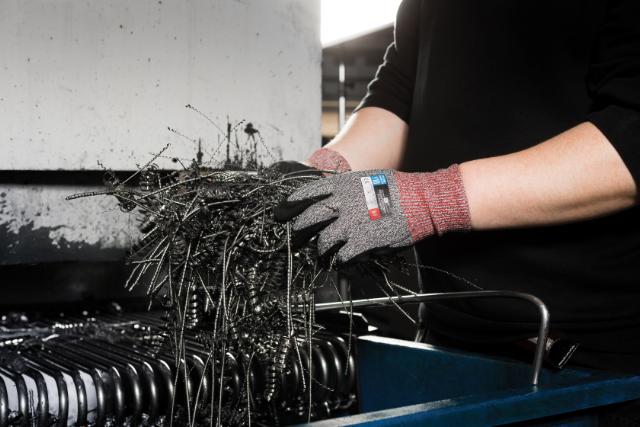
Are you up to date with the best hand protection for the metal industry?
Sheet metal fabrication is an elementary sector of a country’s economy. Each year, millions of tons of raw steel are produced, as well as copper, aluminum, and lead. The increasing demand from major end-users in various industries (automotive, constructio
Sheet metal fabrication is an elementary sector of a country’s economy. Each year, millions of tons of raw steel are produced, as well as copper, aluminum, and lead. The increasing demand from major end-users in various industries (automotive, construction, aerospace, electrical and electronics) for fabricated metals is a significant driving force for its global market growth.
Europe is the second largest market for global metal fabrication, dominated by Germany and Italy, and owing it to its major sector – automotive. The continuous overall automotive sales growth both in traditional and electric cars equates to more requirements for different types of sheet metal to fabricated parts.
Metal fabrication uses various techniques in creating metal structures such as cutting, bending, assembling, and welding. Hence, this industry requires high levels of specialization from its experienced workers as it adapts to new technical innovations. But despite of all these developments, workers in this industry are still facing tough occupational health and safety risks that remain a challenge.
According to International Labour Organization (ILO), in comparison to other manufacturing sectors, risks of severe injuries are generally higher in the metal fabrication industry. This is due to the presence of various hazards making it one of the more dangerous industries – sharp edged tools and materials, etc. Given this fact and the increasing growth of the industry globally, attention to overall risks and safety procedures for its workers must be given importance.
Across the metal fabrication industries, you will find several types of workers such as metalworkers, machinists, structural steel fabricators, machine tool operators and welders. Regardless of the work performed, the common denominator for all workers is the use of their hands – the most important tool. They also face hazardous risks pertinent to their specific task requiring appropriate personal protective equipment (PPE) from these preventable injuries. Common injuries include cuts, lacerations, punctures caused by equipment or metal sheet sharp edges, abrasion from friction with rough surfaces, chemical burns and musculoskeletal hand disorders caused by tool vibration.
Granberg has always been committed to maintaining workers safety so they’re ready for every fearless performance task that comes with their line of work, and has been protecting hands for more than 61 years. Our gloves are engineered and designed to protect hands from various hazards such as cuts, punctures, abrasion, impact, vibration, chemical, electrical, and heat. Steel Metal Fabrication workers who are exposed to these industry-related hazards deserve the best appropriate hand protection to help them stay safe and productive while not neglecting their comfort.
Cuts and lacerations while handling metal sheets and sharp edged objects are the top hazards in metal fabrication, and is advisable that workers wear cut resistant gloves to keep them protected. Our new Granberg 598 provide the highest blade cut resistance according to EN388:2016 level F, ANSI/ISEA A7 - a perfect choice for these kinds of tasks. It has an excellent abrasion and tear resistance, very flexible and comfortable while providing grip in wet, dry and oily conditions, and Oeko-Tex® 100 approved. Meanwhile, our Granberg 592, also providing great cut protection (EN388:2016 level D, ANSI/ISEA A6), offers resistance to contact heat of up to 100ºC for 15 seconds and touch screen compatibility. This can be useful for those working with handling metal sheets without having to remove their gloves to access touch screen devices.
Another hazard that can be prevented in the sheet metal fabrication is exposure to heat. Sheet metals are highly conductive to thermal energy. If there’s an open flame or other heat source nearby, the sheet metal can easily pick up this heat, and touching a hot piece of sheet metal can burn the workers hands. Our Granberg 1024 is a great choice, with its full Kevlar® lining that provides both cut and heat protection. The Granberg 1023 is Arc flash approved to Level 3, with soft and strong goatskin leather that offers excellent dexterity, also with full Kevlar® lining. It is available with a longer cuff, Granberg 1025, for better protection from heat and cuts. If you want to know more about the best possible hand protection suitable for the Metal Fabrication Industry, get in touch with our team and we will be happy to help you.